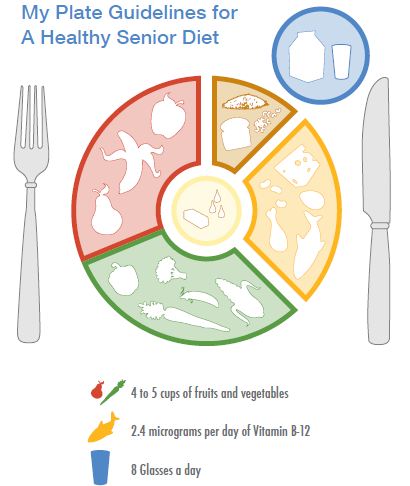Food is a huge part of any culture. The enjoyment and sharing of food is how we connect with people, welcome them and show them we care. Eating with others is a social activity by itself. But as we age, our enjoyment of food can decline due to numerous factors. Older adults have a high risk of being malnourished – 1 in 4 American seniors experience malnutrition. By knowing the signs of malnutrition and ways to encourage healthier eating, you can help the elders in your life maintain a healthy lifestyle.
Why Are Seniors Malnourished?
- Poor dental health makes chewing difficult.
- Difficulty with or lack of interest in cooking leads to eating unhealthy packaged foods
- Diminished taste in food because of decreasing taste buds and sense of smell
- Grief, depression or dementia.
- Desire to avoid eating alone
- Financial concerns – healthy food might be too expensive on their fixed income
- safety concerns (they are afraid to go shopping alone)
- Belief that not being overweight or being older means you can eat whatever you want
- Depression and dementia
Signs of Malnutrition
- Depression or lack of energy
- Getting sick often; slow healing time for injuries and wounds; bruised, dry skin
- Loss of appetite
- Weight loss; loose-fitting clothes; muscle weakness
- Trouble chewing or swallowing,
- Expired food in the fridge
Essential Nutrients for Seniors
Vitamin deficiency varies according to the individual. Before taking any supplements, seniors should visit a doctor to determine what is necessary. Some of the common nutrients that seniors need are:
- Calcium, Vitamin D, Vitamin B12
To increase Vitamin B12 intake, look for ‘fortified’ cereals that contain B12. The USDA recommends that seniors drink three cups of low-fat or fat-free milk a day. Yogurt, hard cheese and buttermilk are good substitutes in case of a sensitivity to lactose. If you’re looking for a full breakdown of a proper diet for seniors, click here for two eating plans (scroll to the bottom).
Prevention and How to Help
If you have noticed some of the above signs in a loved one, don’t panic. There are many ways to get back on the path to healthy eating.
- Help them shop for their groceries to ensure their buying nutritious foods. Avoid foods that may hurt their teeth or gums.
- Visit them and help prepare meals that are well-balanced.
- Make meal times more social. Both points above can be a way for you to hang out more with the senior life. Additionally, you can invite their friends or family members over for meals. When eating becomes a fun, social activity again, older adults are more likely to eat.
- If you do not have the time to devote to meal prep and grocery shopping, it might be to time to get help elsewhere. Consider a service like Meals on Wheels or employing an at-home caregiver.
- Take your loved one to a doctor before making lifestyle changes. Consider seeing a Registered Dietitian if necessary. Don’t forget to ask about vitamin supplements.
Malnutrition is preventable, though it sadly affects millions of seniors in North America. Below is an example of healthy diet guidelines. Everyone’s body is different so adjust these guidelines to fit the individual. Eating well has many benefits, one of which is fall prevention. Read our blog post on how seniors can eat their way to better balance. If you are interested in knowing more about fall prevention, contact us to learn about Oval, our highly advanced fall sensor.
Senior Nutrition
Resources by A Place for
Mom





